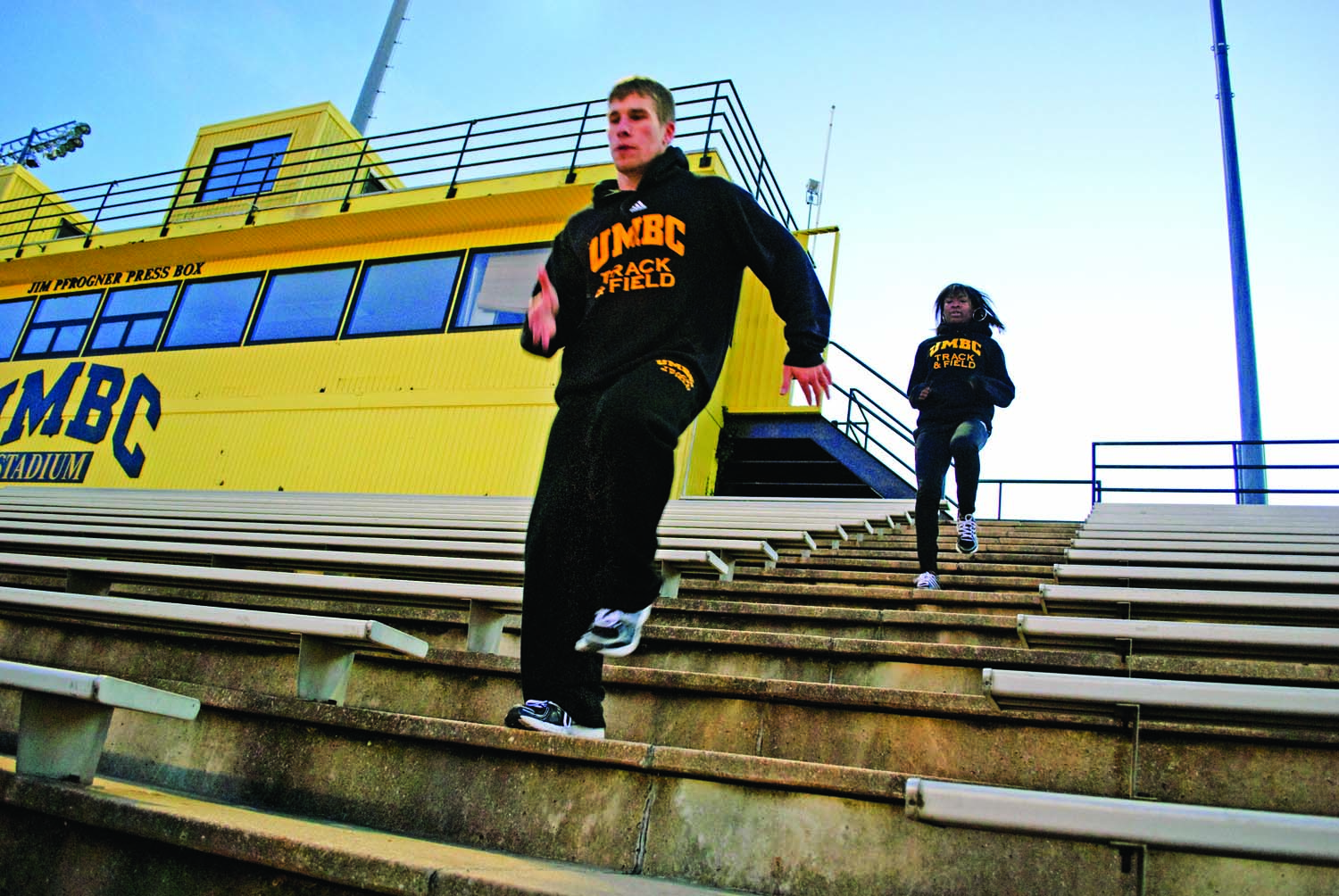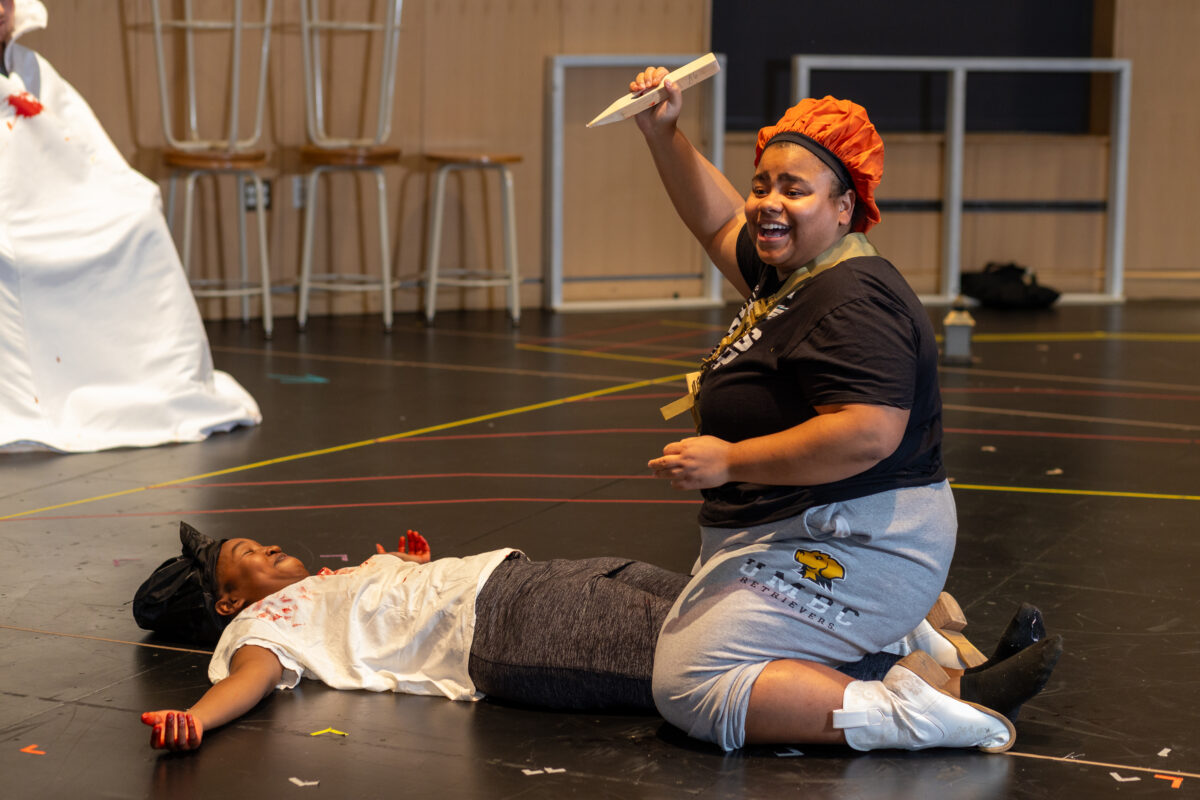 With David Bobb ’02, Track & Field Head Coach
With David Bobb ’02, Track & Field Head Coach
Don’t get us wrong: there’s nothing bad about being slow. We like to relax as we sip our coffee in the morning. We like to take our time ambling down UMBC’s treelined thoroughfare on a cool spring morning. And we like to savor a long, juicy novel word by luscious word. Really, we do.
Sometimes, though, you have to be fast. And when that time comes – whether you want to beat a fellow shopper to the last deal on the sales rack, or outstep your buddies on a lunch break dare – you need to be prepared.
Where matters of speed at UMBC are concerned, we made a beeline straight to the source: David Bobb ’02, health administration & policy, UMBC’s Track & Field Coach and one of the university’s most highly decorated athletes of all time.
If it’s pep that your step is after, Bobb’s three-week plan will put you on the fast track. And fast.
— Jenny O’Grady
Step 1: Set a Goal…and Stick to it
So, you want to be fast, but first things first. What’s your goal?
“You have to have a plan,” says Coach Bobb, who was a five-time Division I All-American as a student-athlete at UMBC and was inducted into UMBC’s Athletic Hall of Fame in 2003. “Whether you’re training for an event or just want to race your friends, you have to know what you want and work toward it.”
Maybe you want to run a 5K, or maybe you want to run for five seconds. For the purposes of this story, we’re going to imagine ourselves wanting to improve our time running the classic 40-yard dash, a short-yet-deceptively-tough sprint.
Keeping a goal in mind as you begin training is important for staying focused. Without goals, it’s all too easy to stop before you even start, says Bobb. And never starting is the opposite of fast.
Step 2: “Routine” is Anything But When Training
And now for the dreaded physical first step: actually getting up and moving. Sad to say, without consistent reminders – i.e., practice – your body will not get used to moving faster than normal.
“Most of the time, people are sitting in one place,” says Bobb. “When you train consistently, for at least three weeks, you’re reintroducing those explosive moments to your body.
For Bobb, an “explosive” three-week training regimen would flow like this:
- Monday: Run up stadium steps (or equivalent) several times
- Wednesday: Run a couple of 40-yard dashes
- Friday: Run a couple of 100-yard dashes
Find yourself a local track with distance markings (UMBC has one, if you’d like to visit!), and you should be on your way. And don’t forget to stretch your arms and legs well before and after each, um, explosion. Hurting yourself would be an unfortunate hurdle in completing your training.
Chances are, you’ve seen advertisements for this or that energy drink/powder/gel chew promising amazing results for little effort. Maybe you’ve even tasted one (yuck!) and felt an extra zip in your gait. But, when considering your meals during the three-week training period, Bobb says to steer clear of empty promises.
“Stay away from the energy drinks,” he urges. “You should be eating lean proteins, you should stay away from high fat foods, and make sure you stay hydrated.”
It may sound elementary, but treating your body to healthy foods for an extended period of time will not only make you feel better, it will improve the results of your physical training, Bobb says.
Step 4: Birds of a Feather are Fast Together
If you’re sensing a bit of a theme here (hint: consistency!), you’re already one lap ahead. But, what do you do when, two and a half weeks into training, you suddenly run out steam? How can you re-energize yourself?
“When I run, I think about the pure joy, the freedom,” says Bobb, while admitting that no one motivational tool works for everyone.
Working out with a friend or spouse is a great way of staying on track, he says, but there are also plenty of great resources online to keep you motivated, including runnersworld.com and marylandrunning.com, as well as online social communities devoted to nutrition and exercise tracking. Whatever you choose, just remember Coach Bobb’s parting words.
“Anyone can run. Anyone.”
We here at the UMBC Alumni House care about our readers’ health. That’s why we knew we had to test out Coach Bobb’s plan for getting fast and spend the first three weeks of January eating healthy (or, at least, healthier), thinking positive thoughts and racing up and down Walker Field. Did we actually improve our speeds? You’ll have to watch our video to see.
Tags: David Bobb, how to, How To Be Fast, Winter 2012






